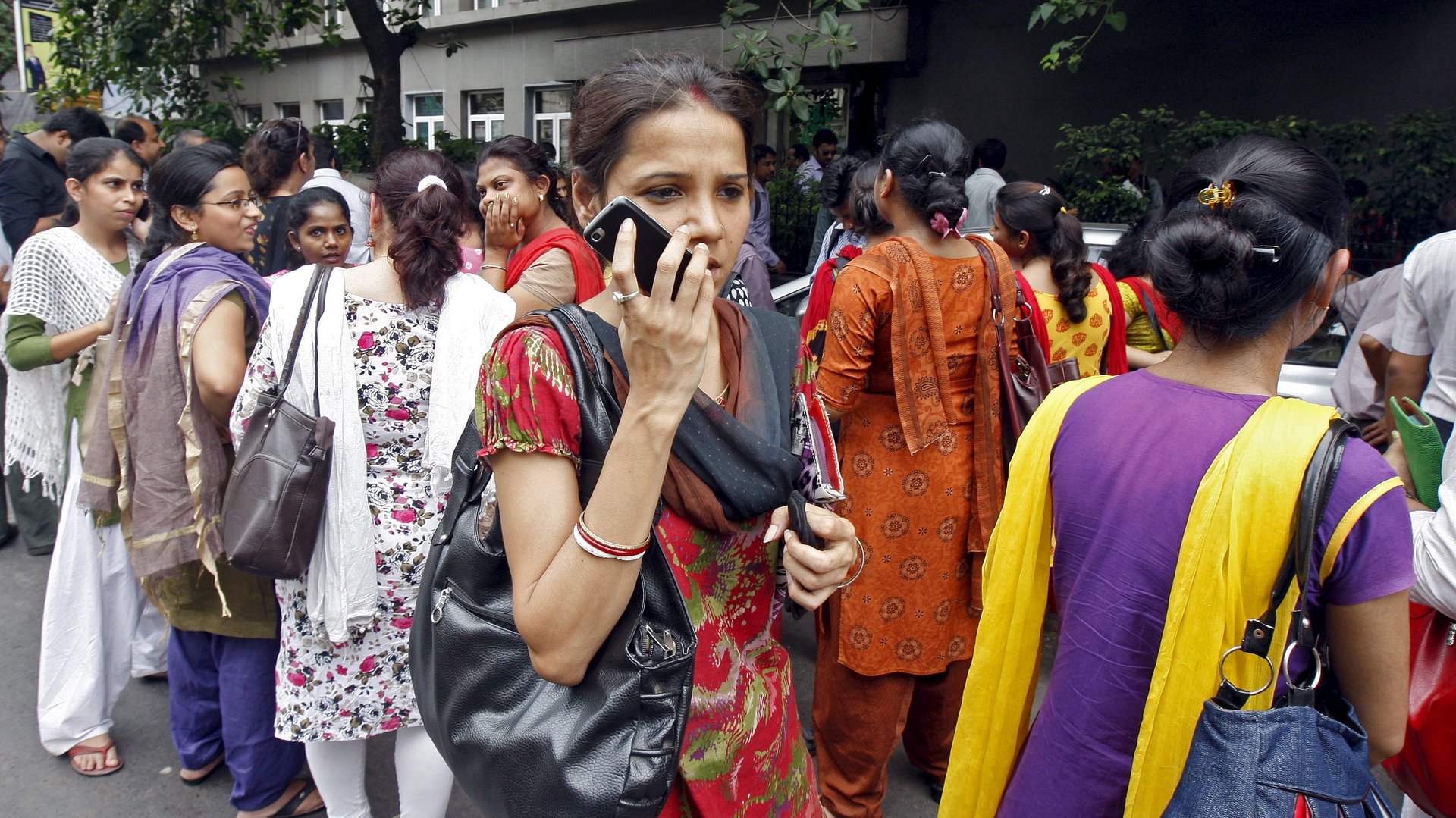The fate of smartphones in India depends on festivals and feature phones
The world’s second-largest smartphone market hasn’t had it easy over the past few months.


The world’s second-largest smartphone market hasn’t had it easy over the past few months.
After demonetisation prompted a cash crunch that hit sales, the complications following the recent implementation of the goods & services tax (GST) only made things worse, prompting a slowdown in smartphone shipments to India. In the second quarter of this year, 28 million smartphones were shipped to the country, a “modest” 3.7% year-over-year increase, according to market research firm International Data Corporation. In comparison, smartphone shipments had grown a “healthy 14.8%” annually during the first quarter of 2017.
But industry experts believe the tide is turning, as retailers prepare for the biggest quarter of the year.
“We estimate the market to jump back to double digit growth ahead of a festive season in (the second half of) 2017,” said Shobhit Srivastava, a research analyst at Hong Kong-based Counterpoint Research.
Brick-and-mortar shops have cleared their pre-GST inventory and are lining up aggressive discounts to attract customers during the festival season. Online behemoths like Amazon and Flipkart, too, are set to host their own mega online festivals, the IDC said. These e-retail giants have roped in electronics brands such as TCL and Onida to sell exclusives, as well as give up all or part of their profit margin so consumers can get better deals, the Economic Times reported. Moreover, vendors are also set to launch new smartphone models in the Diwali festive period, IDC noted.
“The sentiment is indeed positive in the market. All the ambiguities have cleared now, and vendors are gearing up for the upcoming festival season to recover from the slow start in the first half of this year,” Jaipal Singh, senior analyst at IDC, said.
But this recovery won’t necessarily spell success for domestic smartphone manufacturers.
Tough competition
Chinese players are likely to continue dominating the Indian market. Between the second quarter of 2016 and the second quarter of 2017, Chinese vendors Xiaomi and Vivo saw their market shares soar from 3.3% to 15.6% and 2.6% to 11.9%, respectively. Vivo leapt up especially because of its “aggressive distribution and promotion of new Android devices in suburban areas of major cities like Mumbai,” market research firm Strategy Analytics noted.
“Chinese players such as OPPO, Vivo, and Gionee continued to outspend their rivals during the quarter, especially riding high on the IPL and Champions Trophy cricket tournaments,” Counterpoint research analyst Karn Chauhan commented. “These brands also benefitted from a refreshed portfolio in the important Rs10K-20K segment.” A prime example of this was the Rs12,999 ($202) Xiaomi Redmi Note 4—the highest-selling smartphone in the second quarter of 2017, comprising 7.2% of all shipments, according to Counterpoint.
However, Indian phone makers are now more clued in to the demands of the market today. Last year, when telecom upstart Reliance Jio flooded the country with free 4G connections, Indian vendors were not ready with a 4G portfolio. “They thought it will take some more time for the entire category (of smartphone users) to migrate to 4G,” Singh of IDC said. ”Now they are prepared for the upcoming season,” Singh said, adding that Indian vendors have a stronger grip over distribution in India, and will make use of that to gain back market share.
“Especially (the) segment (of phones priced) less than Rs6,000, hardly any Chinese are serving this segment…and this segment is a mass contributor, so they are definitely launching more products in this segment so they can bring volumes,” Singh pointed out.
But the smartphone pie that both Indian and Chinese players are trying to bite into is far from large. In the price-sensitive country, more than half of the handsets shipped are still feature phones.
A country of feature-phone fans
Despite being the world’s second-largest smartphone market, only 220 million of India’s 1.3 billion people use smartphones. In a recent survey (pdf) of nearly 1,000 feature phone users across India, only 15% intended to switch to a smartphone on their next purchase, thanks to the long battery life, big screens, and easy-to-use keypads of their existing handsets.
As a result, the feature phones segment is “holding strong,” according to Counterpoint. The launch of the “effectively free” Reliance Jio phone is set to disrupt the Rs1,000-Rs1,500 category, according to analysts. Together with Airtel’s Rs2,500 ($39) rival, the telcos could keep more feature phone users from converting to smartphones. Recognising the potential in this segment, local brand Micromax is also working on its own VoLTE (Voice over LTE) feature phone.